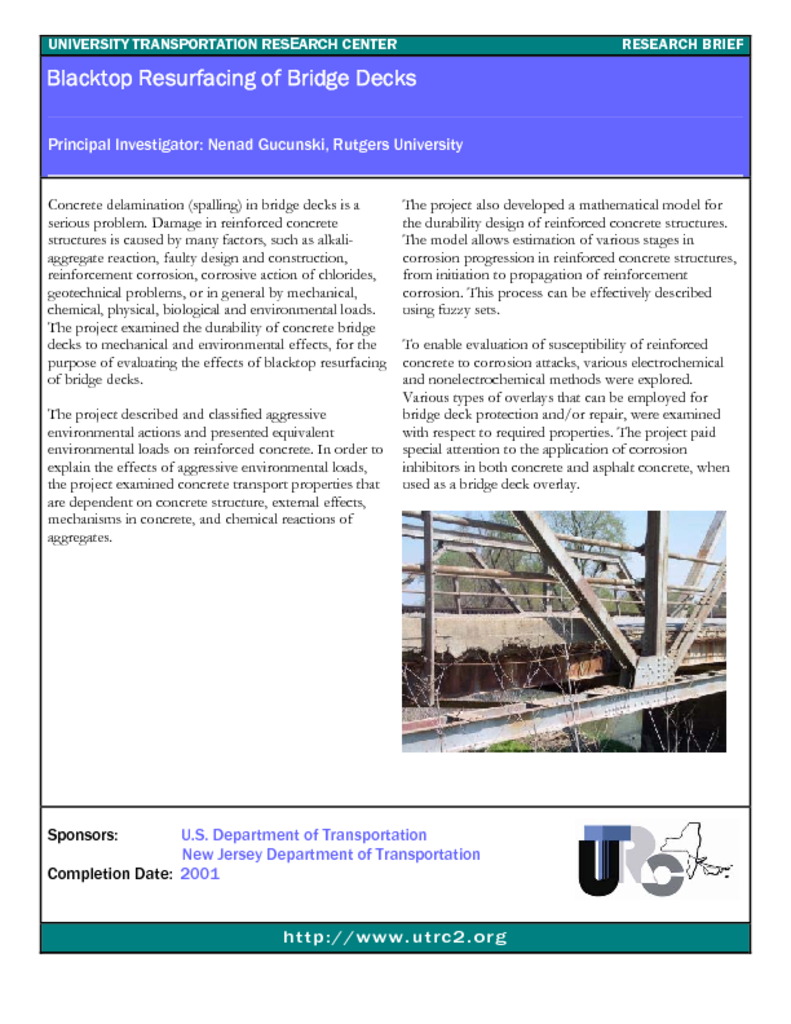Concrete delamination (spalling) in bridge decks is a serious problem. Damage in reinforced concrete structures is caused by many factors, such as alkali-aggregate reaction, faulty design and construction, reinforcement corrosion, corrosive action of chlorides, geotechnical problems, or in general by mechanical, chemical, physical, biological and environmental loads. The project examined the durability of concrete bridge decks to mechanical and environmental effects, for the purpose of evaluating the effects of blacktop resurfacing of bridge decks.
The project described and classified aggressive environmental actions and presented equivalent environmental loads on reinforced concrete. In order to explain the effects of aggressive environmental loads, the project examined concrete transport properties that are dependent on concrete structure, external effects, mechanisms in concrete, and chemical reactions of aggregates.
The project also developed a mathematical model for the durability design of reinforced concrete structures. The model allows estimation of various stages in corrosion progression in reinforced concrete structures, from initiation to propagation of reinforcement corrosion. This process can be effectively described using fuzzy sets.
To enable evaluation of susceptibility of reinforced concrete to corrosion attacks, various electrochemical and nonelectrochemical methods were explored. Various types of overlays that can be employed for bridge deck protection and/or repair, were examined with respect to required properties. The project paid special attention to the application of corrosion inhibitors in both concrete and asphalt concrete, when used as a bridge deck overlay.
Publication Category




